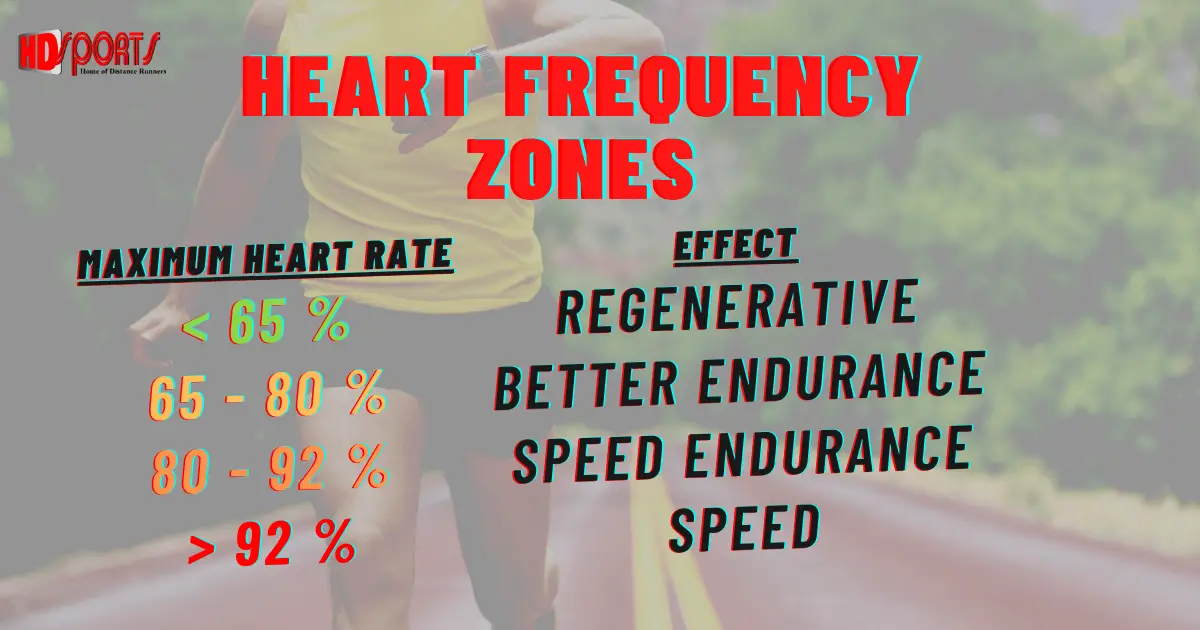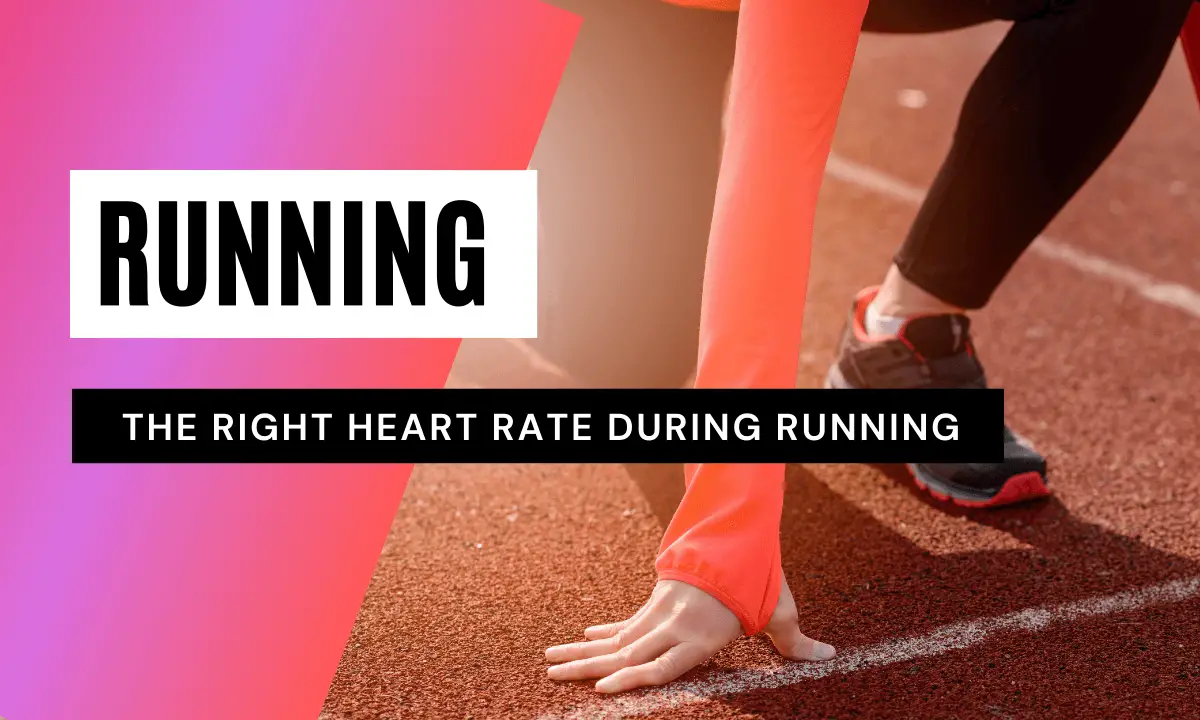Many runners control their running training via the pulse.
The higher the pulse or heart rate, the higher the load. The higher the load, the shorter we can maintain that intensity and the more tiring the workout.
But is there a heart rate range that is ideal for running? That depends on what goal is being pursued with running. Someone who is training purely for health reasons should maintain a different heart rate range when running than, say, an athlete who wants to improve regularly through running training and is training for future competitions. Interesting fact: There is also an ideal heart rate for running to reduce stress.
Improve endurance: The ideal heart rate
Basically, we need to reach a heart rate of at least 65 percent of our maximum heart rate when running for training to have an actual effect on our endurance. "Basic Zone 1" (GA1 for short) is in the range of 65-80% of maximum heart rate. This intensity range encompasses the majority of endurance training. Anything below this will result in (almost) no improvement in endurance, anything above this is intense running training and should be used with caution, otherwise overtraining will occur.
Back to the "basic range 1". So a runner with a maximum heart rate of 200 would have to run his base runs in a range of 130 - 160 of the maximum pulse. Regular running training in this range will improve our endurance performance. However, this training has hardly any positive effects on running speed. Since we also want to become faster when running, we must therefore also train in a different intensity range. How this works, we answer in the following point:
At what heart rate do I get faster?

If we run without exception in a basic range of up to 80% of maximum heart rate, we do build up good endurance. But as a rule, the performance peak is reached relatively quickly.
For further improvements, more intensive running units are necessary. These are faster endurance runs, tempo runs or the often hated interval training.
Brisk endurance runs are run in a range of 80 - 85 percent of the maximum heart rate, under certain circumstances even up to 90 percent of the maximum heart rate. In an intensity range of about 90 percent of the maximum heart rate, or even above, the tempo units are run during interval training. Interval training alternates between high intensity and recovery (trotting or walking). The high pace is similar to the planned competition pace or even a slightly faster pace. In such sessions, training is always controlled by pace and not by heart rate.
Through regular intensive training, the body learns to adapt to the new, previously unaccustomed pace. The result is an improvement in running performance in competitions.
Important: Intensive units with more than 80% of the maximum heart rate should not be completed too often. A hobby runner usually devotes himself to interval training once a week. A competitive athlete or top athlete two to three times. Basically, however, about 70 percent of the training volume is run in the "basic zone 1" described above.
The 25 most beautiful marathons in the world
Heart rate during competitions or marathons
The heart rate in competition is correspondingly high due to the high load. The level depends on the distance. In a marathon, of course, the heart rate should not be as high as in a 5-kilometer run.
We recommend the following heart rate ranges for competitions:
| Distanz | Puls |
|---|---|
| 5 km | 93 - 97 % max. HF |
| 10 km | 90 - 95 % max. HF |
| Halbmarathon | 87 - 92 % max. HF |
| Marathon | 85 - 88 % max. HF |
| Ultralauf | < 85 % max. HF |
Reduce stress and release happiness hormones
The ideal heart rate for reducing stress and simultaneously building up happiness hormones has been determined to be 80 percent of the maximum heart rate, according to scientific study.
But somewhat surprisingly, the heart rate is therefore not very low, but at the upper end of the basic range 1. This means that the pace challenges us somewhat, but does not overwhelm us in any way. So a runner with a maximum heart rate of 200 would have to run at a heart rate of 160 to finish the workout as relaxed as possible. In this range, a lot of cortisone is broken down and an above-average amount of serotonin is released. Cortisone is a stress hormone, serotonin is a happiness hormone.
How do I calculate my maximum heart rate?
To calculate the maximum heart rate as reliably as possible, we recommend performance diagnostics in the form of a lactate test or a respiratory gas analysis.
Alternatively, it is also possible to work out your maximum heart rate on a rather short distance. For example: run about one kilometer until you are completely exhausted, then immediately measure your pulse or take the maximum value measured by the running watch as your maximum heart rate. It is also very good to calculate the maximum heart rate during maximum runs on a course with steeper climbs. On such a course, a total state of exhaustion is reached very quickly at maximum load.
We cannot recommend the very often used formula "220 - age". This is because the result can deviate by up to 20 strokes (both downhill and uphill) from the actual real value. Training control according to this formula would therefore be negligent
Summary: The heart rate ranges for running training
Below 65% of the maximum heart rate: Regenerative endurance run.
- No or a very low training effect
- Only recommended for run-in or run-out
65 - 80 % of the maximum heart rate: Basic range 1
- About 70 % of the training volume is run in this range
- Slightly demanding intensity at which short conversations can still be held
- The training should be challenging, but by no means overtaxing
- Endurance runs from 30 minutes to 3 hours in length (marathon training)
80 - 85 % of maximum heart rate: basic range 2
- Faster endurance runs
- The pace is below the competition pace
- Demanding, but also not yet overtaxing
- Below the anaerobic threshold
- Endurance runs from 30 minutes to 2 hours in length
85 - 90 % of maximum heart rate: tempo runs and long competitions
- Very fast endurance runs
- Marathon pace and possibly also half marathon pace
- Very demanding
- But still below the anaerobic threshold
- Endurance runs up to 90 minutes or even up to marathon distance in competitions
- Interval training with longer tempo runs
90 - 97 % of maximum heart rate: interval training and short competitions
- Short tempo runs
- Competitions up to half marathon distance at the most
- Interval training with short tempo runs
- Very demanding, mostly above anaerobic threshold (approx. 92 % of maximum heart rate)
More running: What does fartlek mean and how does the training work?



![Running in Romania - All Races 2024 [Running Calendar] Running Races in Romania](/images/thumbnails/raxo/ramp/tb-w300-h100-crop-int-4b7dcd8f71e3e6c380bcbe787b67e906.jpg)
![Running in Croatia - All Races 2024 [Running Calendar] Running Races in Croatia](/images/thumbnails/raxo/ramp/tb-w300-h100-crop-int-9abc61a47346787197b14e507bdc26c8.jpg)
![Running events in October 2024 [Running Calendar] Running calendar: Running competitions in October](/images/thumbnails/raxo/ramp/tb-w300-h100-crop-int-ceb5dc3f8478d140968955d308b73ec9.jpg)
![Running in Mauritius - All Races 2024 [Running Calendar] Running Races in Mauritius](/images/thumbnails/raxo/ramp/tb-w300-h100-crop-int-ad9fcee27e161d88ae93566ce6d63320.jpg)


Kommentare zum Artikel
Alle Kommentare und Meinungen zu diesem Beitrag